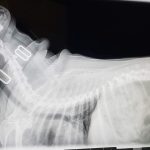Hello
Have you asked for a second opinion from another veterinarian? Try to find a local independently owned veterinary practice that comes recommended by people in your area. Reach out to local rescues and shelters and use social media to try to find someone.
I don’t know enough about your cat to offer more specific information.
I hope this helps and I wish you the best.














Hello,
I would probably go find a different vet and ask for more help. It doesn’t sound like your vet is helping you enough. I also think that a full patient care conversation is warranted. I talked about how to help manage these guys wrt feeding peeing pooping ambulating and pain meds. I also talk about methocarbamol as I think these guys need this. Also ask about gabapentin and acupuncture.
I have a lot of information on my blog and YouTube channel. Kmdvm.blogspot.Com search Ivdd.
Thank you so much. Does this seem like IVDD to you? That’s how I came across your blog, and to me, the symptoms you describe sound a lot like what our girl is experiencing.